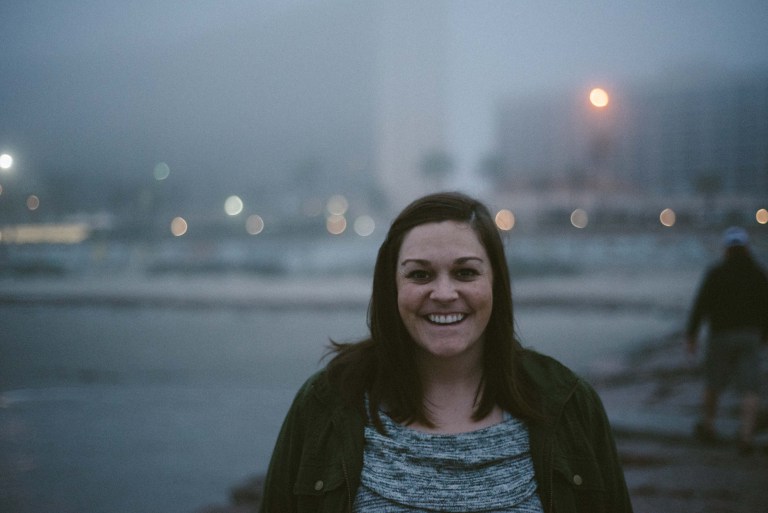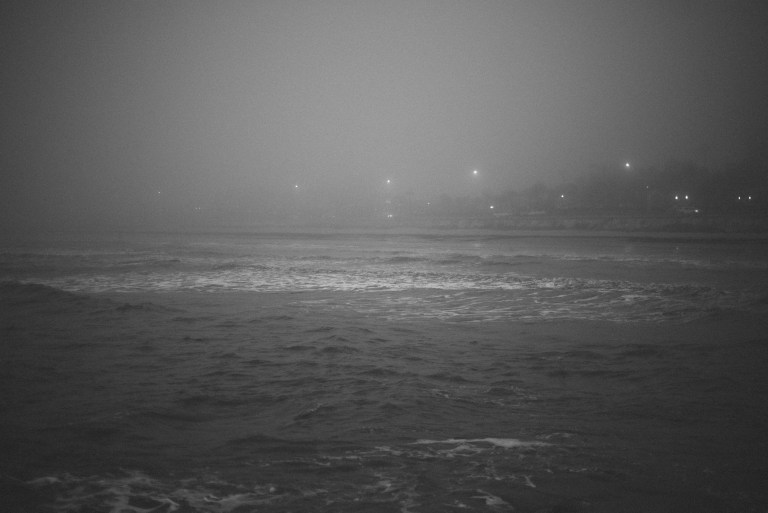Press the button.
In 2005 I bought my first personal camera. It was a tiny HP Photosmart digital camera that I carried with me everywhere. It had no manual settings whatsoever but it could fit in my pocket. All I knew is that I wanted to take photos like the ones I saw in books at the library. Nevermind that those books contained pictures from the likes of Henri Cartier-Bresson, Arthur Rothstein, Gordon Parks and more, that didn't matter. I just wanted to capture the world from my little eyes.
A Walk In The Park
Taken with a HP Photosmart digital camera.
Within a week of getting that camera I grabbed a few friends and headed to a local park. For some reason I was obsessed with black and white photos so pretty much every single shot I took that day was monochromatic. Most of them are pretty poorly composed, lack good depth of field and generally fall short of what I would now consider publishing, but I love all of them. One picture stands out to me in particular, mostly because of the story behind it. My friend Jen was standing in some type of almost torn down structure and the way the light came across her body was intriguing to me.
See, the whole thing was a ruse. The reason we were there wasn't to take pictures, it was to give my friend John some time "alone" with her. I was a matchmaking photographer and I'd only just got my first camera. The whole thing smacked of inauthenticity, but we didn't have a whole lot else to do in southwest Missouri at the time. Still, every time I go back through my photos, this one stands out to me. The sharp contrast between shadow and light really captures what was going on that day. two people, pulling in opposite directions but still trying to walk together.
Castles and Catching Light
My next stop with my camera was in England, where it captured quite possibly the best photo that it could take. I'd had the camera for a while now and knew how to manipulate it enough to take some decent images but on a summer day in Warwickshire, it came alive.
Taken with a HP Photosmart digital camera.
We were visiting Warwick Castle in the West Midlands of England and most of my shots were pretty typical ones of friends trying on armor or all the girls posing with the rugged looking archery performer (I'm looking at you Kate), but this one shot stood out. It was a prefect summer day and I found myself standing alone looking at the massive walls of the castle. I didn't do anything special, it just kind of happened. Some of the best photos you'll ever take will be spontaneous and probably not technically correct, but they'll be perfect.
Carillons and Campuses
Taken with a Pentax K110D DSLR camera.
The very next year I purchased my first DSLR camera, a Pentax K110D. It was the cheapest DSLR I could find, and the most I could afford at the time. Transferring what little about photography I'd learned from my HP point and shoot to this new camera with buttons and knobs was daunting. And fun. I found myself always carrying it with me, trying to find the perfect angle and shutter speed to expose the sensor.
At this point I was taking photojournalism courses and had the opportunity to have my work critiqued. The initial thought of having others tell me what was good or bad about my photography was frightening to say the least, but it pushed me to consider what I was looking at through the lens more.
This picture of the carillon tower on the campus of Missouri State University was one of the first that I took with my K110D and it's probably one of my favorites. I spent a good few years walking that exact path to class and had never seen the light come across it at that angle before. The truth is, I probably had never looked. That's what photography does for me. It's a mechanism to slow down and see the world around me and revel in its beauty and grandeur.
How To Take A Picture
I did a workshop a few weeks ago on taking pictures at events for a local church and the one thing I stressed was that the best camera is the camera you have with you. For most people that's their smartphone. It may not have all the capabilities of a DSLR or something else, but it's almost always close at hand. Learn to use it to your advantage.
The only thing you need to know to start taking pictures is "Press the Button." In the digital photography world, you're only constrained by how much storage space you have so take as many as you can. Experiment, have fun and show the world how you see it. Photography has taught me that every perspective is unique. We all bring some preconceived notions into the world that inform how we see it. That's what makes your photographic eye unique.
I'm going to leave you with an assignment today. Go out and take a picture of someone you don't know. Notice how freeing it is to capture the essence of someone else. Slow down and think about what you're trying to say and then press the button. That's the biggest step.
Featured image taken with a Fujifilm X-T20.


















